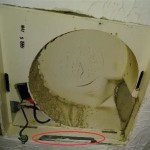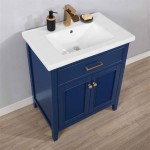```html
Choosing Quality Bathroom Sink Taps: A Comprehensive Guide
The bathroom, often a private sanctuary, relies heavily on functional and aesthetically pleasing fixtures. Among these, the humble bathroom sink tap plays a pivotal role. Beyond simply dispensing water, a quality bathroom sink tap contributes significantly to the overall design, user experience, and long-term cost-effectiveness of the bathroom. Selecting the right taps, therefore, requires careful consideration of various factors beyond mere visual appeal.
This article explores the key aspects of choosing quality bathroom sink taps, focusing on materials, styles, functionality, and installation considerations. The intention is to provide a comprehensive overview to assist in making informed decisions when purchasing bathroom sink taps, ensuring both satisfaction and longevity.
Understanding Materials and Their Impact on Durability
The material composition of a bathroom sink tap directly influences its longevity, resistance to corrosion, and overall performance. Several materials are commonly used in tap manufacturing, each possessing distinct advantages and disadvantages.
Brass: Brass is a widely favoured material due to its inherent durability and resistance to corrosion. High-quality brass taps often feature a lead-free composition, ensuring the water dispensed remains free of harmful contaminants. The density of brass also contributes to a substantial feel, often associated with higher-end products. However, not all brass is created equal. The specific alloy used and the manufacturing process impact the final product's quality. Look for taps described as "solid brass" or "forged brass" for superior strength and resistance to wear and tear.
Stainless Steel: Stainless steel is another popular choice, known for its exceptional resistance to corrosion and its sleek, modern aesthetic. It is generally more expensive than brass but offers excellent durability and a hygienic surface. Stainless steel is also a more sustainable option as it is readily recyclable. When choosing stainless steel taps, ensure the grade of steel is suitable for plumbing applications. 304-grade stainless steel is a common and reliable option for bathroom fixtures.
Chrome-Plated Brass: Chrome plating is often applied to brass or other base metals to enhance the tap's appearance and provide an additional layer of protection against corrosion. While chrome provides a bright, shiny finish, the durability of the plating depends on the quality of the application. Over time, low-quality chrome plating can chip, peel, or corrode, exposing the underlying metal. Opting for taps with multiple layers of chrome plating or a thicker plating thickness can prolong the lifespan of the finish.
Other Materials: Other materials, such as zinc alloys and plastics, are sometimes used in tap manufacturing, particularly in lower-priced options. While these materials may offer a more affordable initial cost, they typically lack the durability and longevity of brass or stainless steel. Zinc alloys are susceptible to corrosion over time, and plastic components can become brittle and prone to cracking. It's essential to carefully consider the material composition and its potential impact on the tap's overall lifespan when choosing between different options.
Beyond the primary material, the finish applied to the tap also impacts its durability and maintenance requirements. Finishes such as brushed nickel, oil-rubbed bronze, and matte black offer different aesthetic options and varying degrees of resistance to fingerprints and water spots. Understanding the properties of different materials and finishes is crucial for selecting taps that will withstand the rigours of daily use and maintain their appearance over time.
Exploring Styles and Functionality to Suit Your Needs
Bathroom sink taps are available in a diverse range of styles and functionalities, designed to complement various bathroom designs and cater to individual preferences. The chosen style should align with the overall aesthetic of the bathroom, while the functionality should meet the specific needs of the user.
Basin Mixers: Basin mixers are arguably the most common type of bathroom sink tap. They feature a single lever or handle that controls both the hot and cold water supply. Basin mixers offer ease of use and precise temperature control. They are available in various designs, from sleek and minimalist to more ornate and traditional. Within the basin mixer category, options like high-rise taps are designed for use with countertop basins, while standard-height taps are suitable for inset or semi-recessed basins.
Pillar Taps: Pillar taps consist of separate hot and cold water taps, typically mounted directly onto the basin. This style offers a classic look but may require more precise adjustment to achieve the desired water temperature. Pillar taps are available in a wide array of designs, ranging from traditional cross-handle styles to more modern lever designs. The distance between the hot and cold water inlets should be considered when selecting pillar taps to ensure compatibility with the basin.
Wall-Mounted Taps: Wall-mounted taps offer a contemporary and space-saving solution. They are installed directly onto the wall above the sink, freeing up counter space and creating a clean, minimalist look. Wall-mounted taps require more complex plumbing installation but can significantly enhance the aesthetic appeal of the bathroom. The spout reach of the tap should be carefully considered to ensure the water stream reaches the centre of the basin.
Waterfall Taps: Waterfall taps create a unique and visually appealing water flow. They feature a flat, wide spout that allows the water to cascade into the basin, mimicking the effect of a natural waterfall. Waterfall taps can add a touch of luxury and elegance to the bathroom, but they may require a larger basin to accommodate the wider water stream. These taps often require a higher water pressure to function optimally.
Touchless Taps: Touchless or sensor taps offer a hygienic and water-saving solution. They utilize infrared sensors to detect hand movement and automatically activate the water flow. Touchless taps are particularly beneficial in high-traffic areas, such as public restrooms, but can also be a practical and stylish addition to residential bathrooms. They help reduce the spread of germs and can contribute to water conservation.
Beyond the basic style, consider additional functionalities such as swivel spouts, pull-out sprayers, and thermostatic controls. Swivel spouts offer greater flexibility in directing the water flow, while pull-out sprayers can be useful for cleaning the basin or rinsing hair. Thermostatic controls maintain a consistent water temperature, preventing scalding and enhancing user safety, particularly for young children and the elderly.
Installation and Maintenance Considerations
Proper installation and regular maintenance are crucial for ensuring the long-term performance and lifespan of bathroom sink taps. Incorrect installation can lead to leaks, reduced water pressure, and even damage to the plumbing system. Similarly, neglecting regular maintenance can result in mineral buildup, corrosion, and reduced water flow.
Professional Installation: While DIY installation may seem tempting, it is generally advisable to engage a qualified plumber for tap installation. A professional plumber possesses the necessary expertise and tools to ensure the taps are installed correctly, complying with local plumbing codes and regulations. Professional installation also minimizes the risk of leaks, water damage, and other potential problems. Furthermore, a professional plumber can advise on the suitability of different tap styles for the existing plumbing system.
Water Pressure Compatibility: Before purchasing bathroom sink taps, it's essential to assess the water pressure in the home. Some taps, particularly those with complex features or specific flow patterns, may require a minimum water pressure to function optimally. Low water pressure can result in a weak or inconsistent water flow, diminishing the user experience. Consult with a plumber to determine the water pressure and select taps that are compatible with the existing system. Pressure-reducing valves can be installed to manage excessively high water pressure, protecting the taps and plumbing fixtures from damage.
Regular Cleaning: Regular cleaning is essential for maintaining the appearance and functionality of bathroom sink taps. Use a soft cloth and mild detergent to clean the taps regularly, removing any soap scum, water spots, and fingerprints. Avoid using abrasive cleaners or scouring pads, as these can scratch or damage the finish. For chrome finishes, a solution of vinegar and water can be effective in removing water spots and restoring the shine. Rinse the taps thoroughly with clean water after cleaning and dry them with a soft cloth.
Addressing Leaks Promptly: Even minor leaks should be addressed promptly to prevent water damage and conserve water. Leaks can often be repaired by replacing worn-out washers or O-rings. If the leak persists, it may indicate a more serious problem, such as a damaged valve or a corroded fitting. In such cases, it's best to consult a plumber for professional repair.
Preventing Scale Buildup: In areas with hard water, scale buildup can be a common problem. Scale buildup can clog the aerator, reducing water flow and affecting the tap's performance. Regularly unscrew the aerator and soak it in a solution of vinegar and water to remove any scale deposits. Alternatively, consider installing a water softener to reduce the mineral content of the water and prevent scale buildup throughout the plumbing system.
Periodic Inspection: Periodically inspect the taps for signs of wear and tear, such as loose handles, dripping spouts, or corroded fittings. Addressing these issues early can prevent them from escalating into more serious problems. Consider lubricating moving parts, such as handles and swivel spouts, with a silicone-based lubricant to ensure smooth operation.
```
Basin Taps For Your Bathroom Duravit

Bathroom Taps With Style More Than Just A Tap
Bathroom Faucets Kingston Brass

Basin Taps Style Meets Substance Grohe

Designer Luxury Modern Bathroom Taps Livinghouse

Basin Taps For Your Bathroom Duravit

Basin Mixers To Go With Your Wash

Ss Traditional Basin Taps Buy At Bathroom City

Guide To Bathroom Taps Fix

Quality Sinks And Taps
Related Posts







